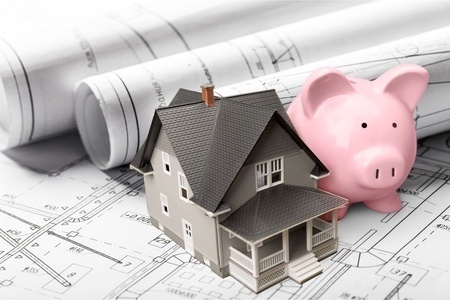
For many homebuyers, choosing the perfect mortgage can be challenging. Whether they’re looking to buy a complete fixer-upper or purchasing a home with a couple necessary upgrades, it’s difficult to identify the most cost-effective strategy—but we might’ve found it for you.
The 203(k) mortgage, formally known as the Federal Housing Administration’s 203(k) Rehabilitation Mortgage Insurance Program, was created to allow borrowers to roll any renovation costs into their overall mortgage. It’s a great option for both homeowners and mortgage lenders, as this FHA-backed loan provides a low-risk product for lenders and relatively easy parameters for borrowers. More specifically, with this mortgage, homeowners are only required to pay a 3.5 percent down payment.
There are two types of 203(k) mortgage:
- Standard 203(k) Mortgage: This is the mortgage for any owners of a fixer-upper, as this loan will cover projects of more $35,000. With this standard option, an HUD Consultant will review the overall project with both the homeowner and the contractor, as well as check in throughout the process and request withdraws from the funds in escrow when requested by the contractor.
- Limited 203(k) Mortgage: The limited 203(k) is perfect for homeowners with a couple upgrades in mind for their house, as it will finance projects of up to $35,000.
Both types are great options to consider because they prevent borrowers from managing multiple loans, payments, and interest rates. In some cases, however, this loan will have a slightly higher interest rate and can thus be more expensive in the short-run. According to Carl Markman, Director of Sales for REMN Wholesale, this should NOT be off-putting for borrowers.
“In most cases, once the work is completed, the borrowers can actually refinance to a little bit lower of an interest rate, and in many cases, get rid of the mortgage insurance that was on the loan,” explains Markman. “In a lot of cases, if you’re fixing up a home, typically the value has increased. So when people do these 203(k)s/HomeStyle renovation loans, the houses are typically worth more now, so they have built in equity immediately.”
It’s important to remember that this only applies to owner-occupied properties. Any investors seeking a loan for renovations should talk to their local lender to discuss alternate home financing options.
For more information about why a 203(k) loan might be right for you, or to learn more about standard and limited 203(k) mortgages, contact one of our mortgage specialists today.


